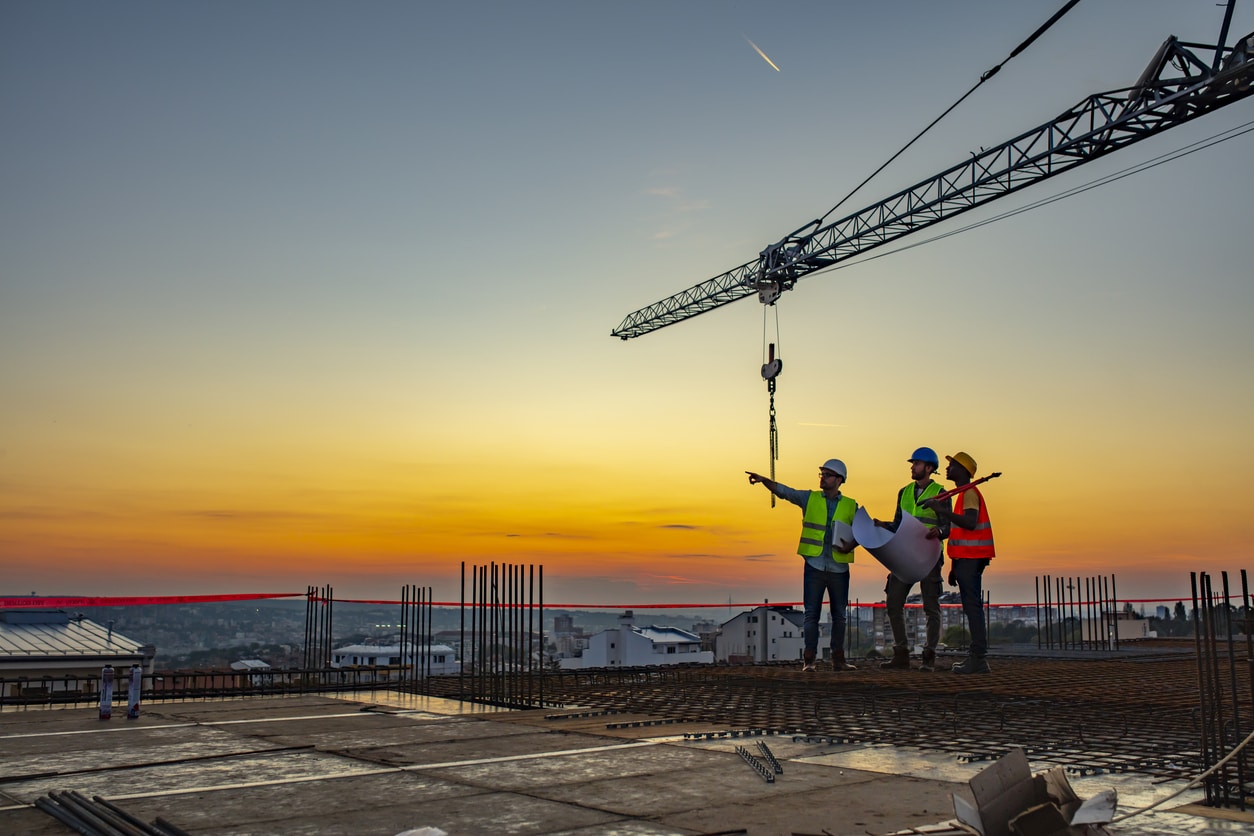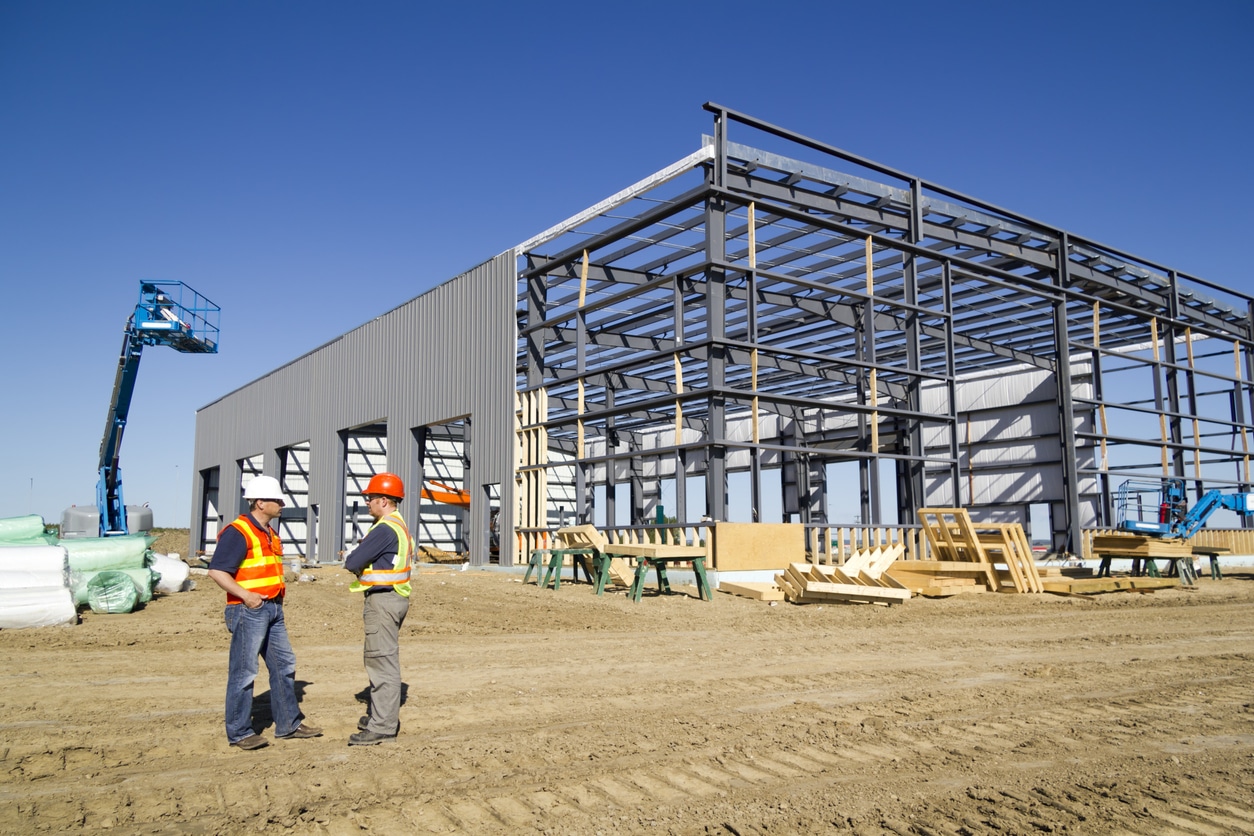Commercial construction projects are complex endeavors that face several challenges, from planning and zoning to…

The design-build approach has emerged as a game-changer, revolutionizing the way projects are executed. Save time and money with streamlined communication and reduced costs. Take the stress from your commercial construction process with a trusted company and accelerated timeline.
At Schonsheck, we’ve embraced this method, recognizing its immense potential to streamline processes, reduce costs, and expedite completion times. Contact us to plan your next project.
What Does Design-Build Mean?
Design-build is a project delivery system where both design and construction services are provided through a single contract with one entity. This approach contrasts with the traditional design-bid-build method, where design and construction services are split between different companies.
The design-build method fosters a collaborative environment where the designer and contractor work together from the project’s inception to completion. Stay involved in the project while trusting the contract every step of the way.
The Benefits of a Design-Build Approach
Streamlined Communication
One of the most significant benefits of the design-build approach is streamlined communication. With both design and construction teams working under one umbrella, there is a unified flow of information, which enhances coordination and collaboration. This integrated communication model leads to fewer misunderstandings and discrepancies, ensuring that everyone is on the same page throughout the project.
Enhanced Collaboration
In a design-build setup, architects, engineers, and builders collaborate closely throughout the project. This teamwork fosters innovative solutions and creative problem-solving, as the combined expertise of all parties is utilized effectively. This setup not only enhances the quality of the final product but also ensures that potential issues are identified and addressed early in the process.
Accelerated Project Timelines
The design-build approach significantly reduces project timelines. Traditional methods often involve sequential phases where construction cannot begin until the design is completed and approved.
In contrast, design-build allows these phases to overlap, enabling a more dynamic and flexible project progression. This overlap can lead to earlier project completion, which is advantageous for clients looking to start their operations as soon as possible.
Efficiency in Project Management
With a single entity managing both design and construction, project management becomes more efficient. The design-build team handles all aspects, from initial concept to final construction, eliminating the need for the client to coordinate between separate design and construction entities. Centralized management leads to a smoother, more organized project flow, reducing delays and administrative burdens.
Cost Savings
The design-build approach often leads to significant cost savings. With improved collaboration and communication, there is a greater focus on cost-effective design and construction methods.
Additionally, the overlapping of design and construction phases can reduce overall project duration, which in turn lowers labor and administrative costs.
Reduced Change Orders
In traditional project delivery methods, changes in design can lead to costly and time-consuming change orders during construction. However, in a design-build project, the integrated team approach allows for more accurate initial designs and better anticipation of potential issues, reducing the likelihood and impact of change orders.
Quality Control
The same team is responsible for the quality of both the design and the construction. This accountability ensures a higher level of commitment to quality throughout the project. The team’s unified goal is to deliver a high-quality product that meets or exceeds the client’s expectations.
Consistency in Vision and Execution
The design-build method maintains consistency between the project’s vision and its execution. Since the design and construction teams are aligned from the start, the final construction more accurately reflects the original design intent, leading to greater client satisfaction.
Risk Management
In a design-build project, the design-build firm assumes more responsibility and, consequently, more risk. This arrangement benefits the client, as it minimizes their exposure to potential risks associated with construction. The design-build firm’s expertise in managing these risks throughout the project lifecycle leads to a more secure and predictable project outcome.
Commercial Construction Can Be Stress-Free with Design-Build Projects
The design-build approach in commercial construction offers a plethora of advantages, including streamlined communication, enhanced collaboration, accelerated project timelines, cost savings, improved quality control, and effective risk management. At Schonsheck, we have honed our expertise in this delivery method, recognizing its value in delivering successful commercial construction projects.
Whether planning a new construction project or renovating an existing commercial space, the design-build method can offer a solution tailored to your needs. Contact Schonsheck today to learn more about how our design-build services can benefit your next project and take the first step towards a streamlined, efficient, and successful construction experience.



